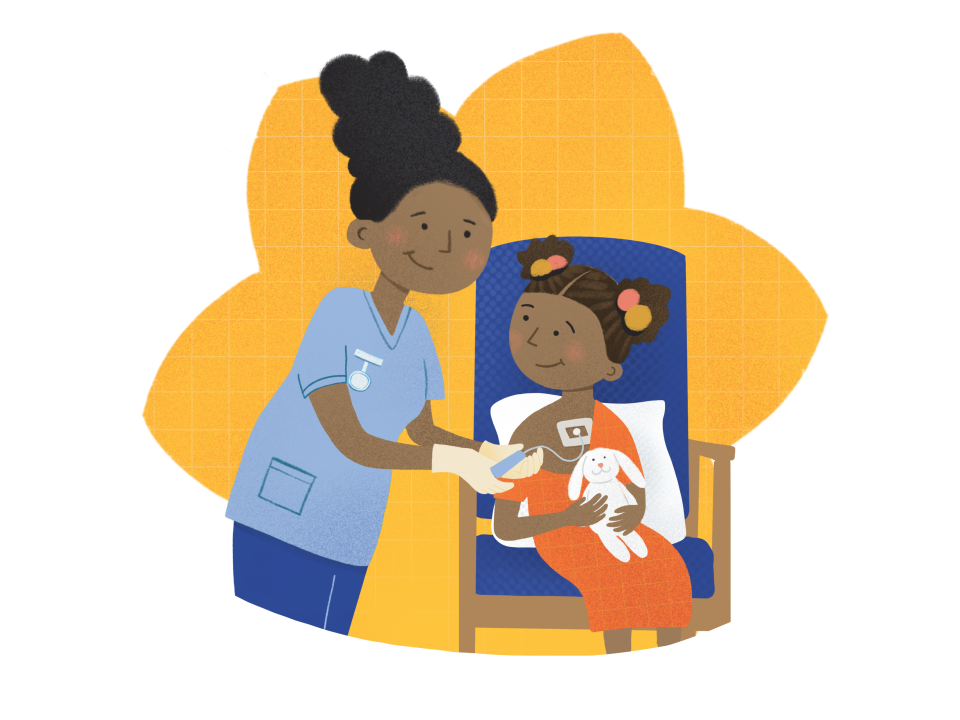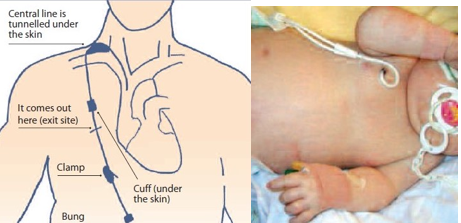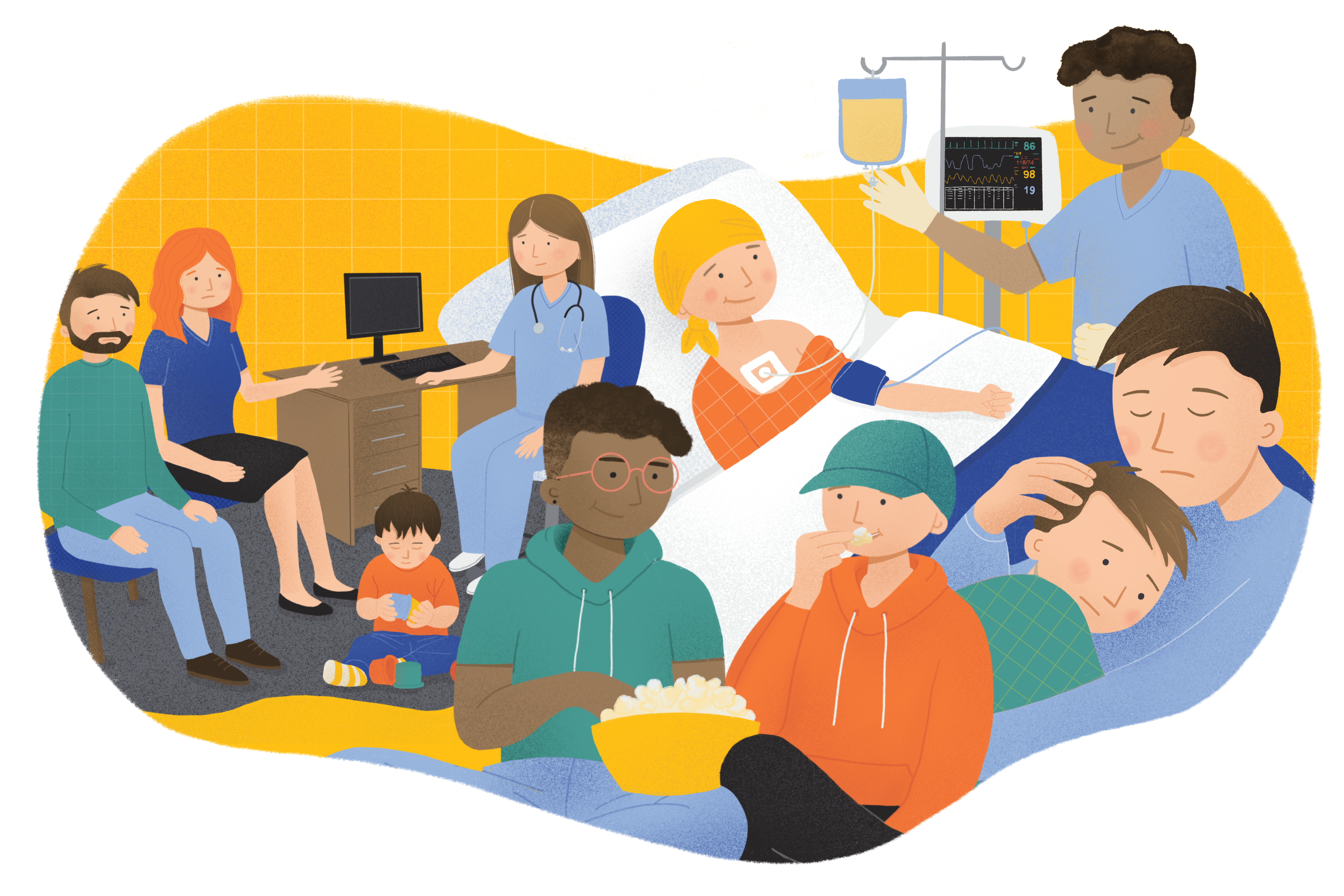Central lines for children

Types of central lines
During cancer treatment, chemotherapy, intravenous medication, fluids and blood products can be given directly into a vein using the following devices:
- Central line
A thin, flexible tube put in through the skin of your child’s chest or neck and into a vein in their chest. For example, Hickman® catheter (‘Freddie’). - Implantable port (portacath)
A thin, soft, plastic tube put into a vein. It has an opening (port) under the skin on your child’s chest. A special needle is used to access a port. - PICC line (peripherally inserted central catheter)
A thin, flexible tube is put into a vein in your child’s arm and then put in (threaded through) to a vein in their chest.
Blood can also be taken from central lines, which means most of the time your child won’t need repeated needle pricks.

Caring for central lines
Before you go home, the nurses will show you how to care for the line or port. For example, changing the dressing and flushing out the line. Your nurses will take as much time as you need to feel confident with this. The Passport folder from CHI at Crumlin has step-by-step instructions for caring for Hickman lines, ports and PICC lines, as well as guidelines on what to do if you have any problems.
- Always wash your hands before touching the line
- Keep the area clean and dry
- Put clingfilm over the area when showering or bathing. Your child's nurse will discuss this with you.
- Follow the hospital's instructions about securing the line.
- Encourage your child to be careful not to pull the line and to take care when dressing, playing etc.
- If the line falls out, put pressure on the exit site and contact the hospital
Contact the hospital if:
- You notice the area is red, swollen, tender or has any inflammation or pus.
- If your child’s temperature rises or your child starts shivering after flushing the line
- If you have any other problems or worries about the line.
For more information
Phone
1800 200 700



